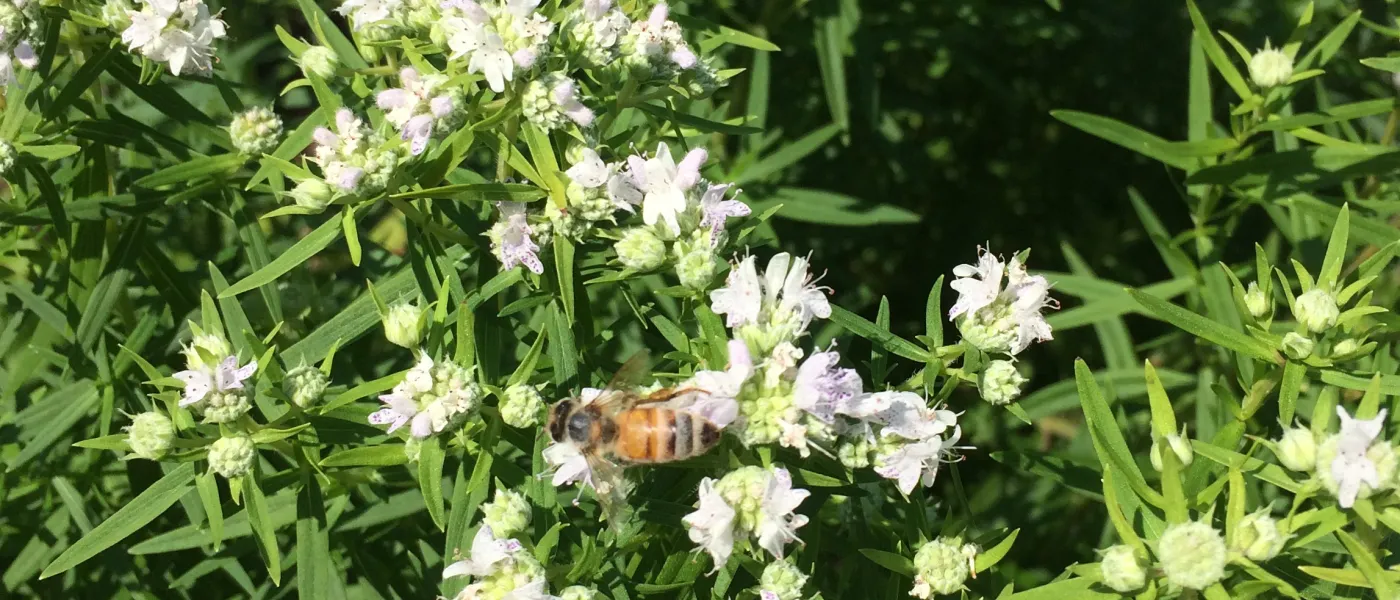
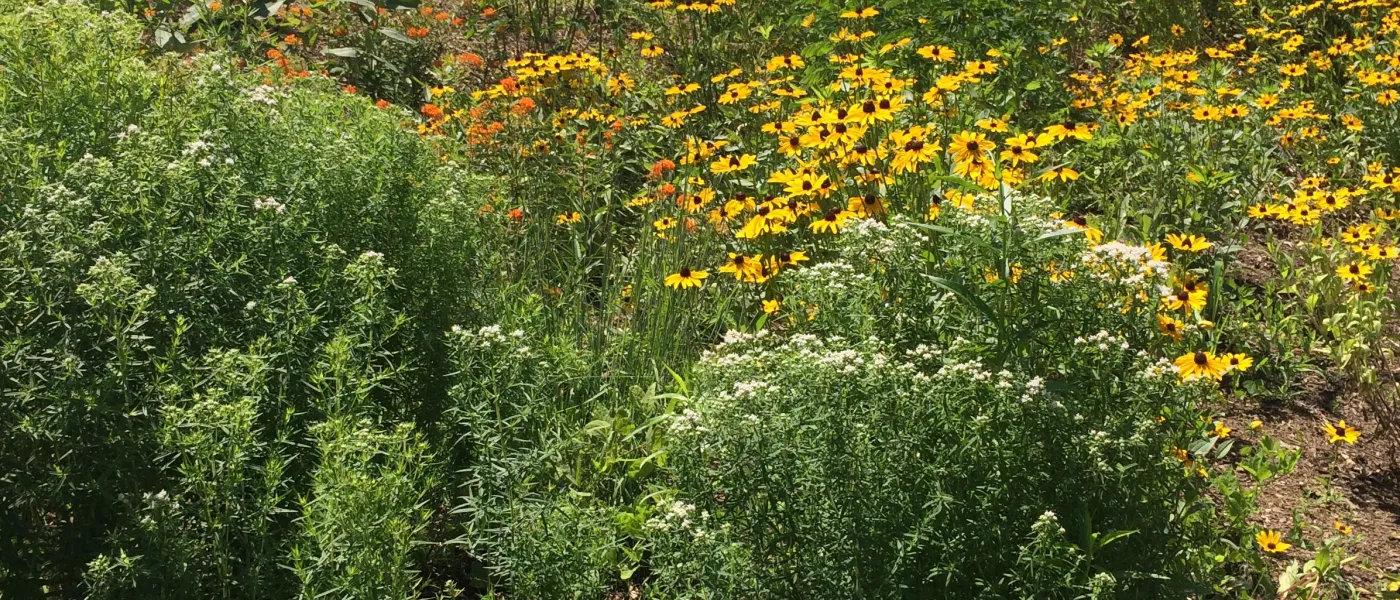
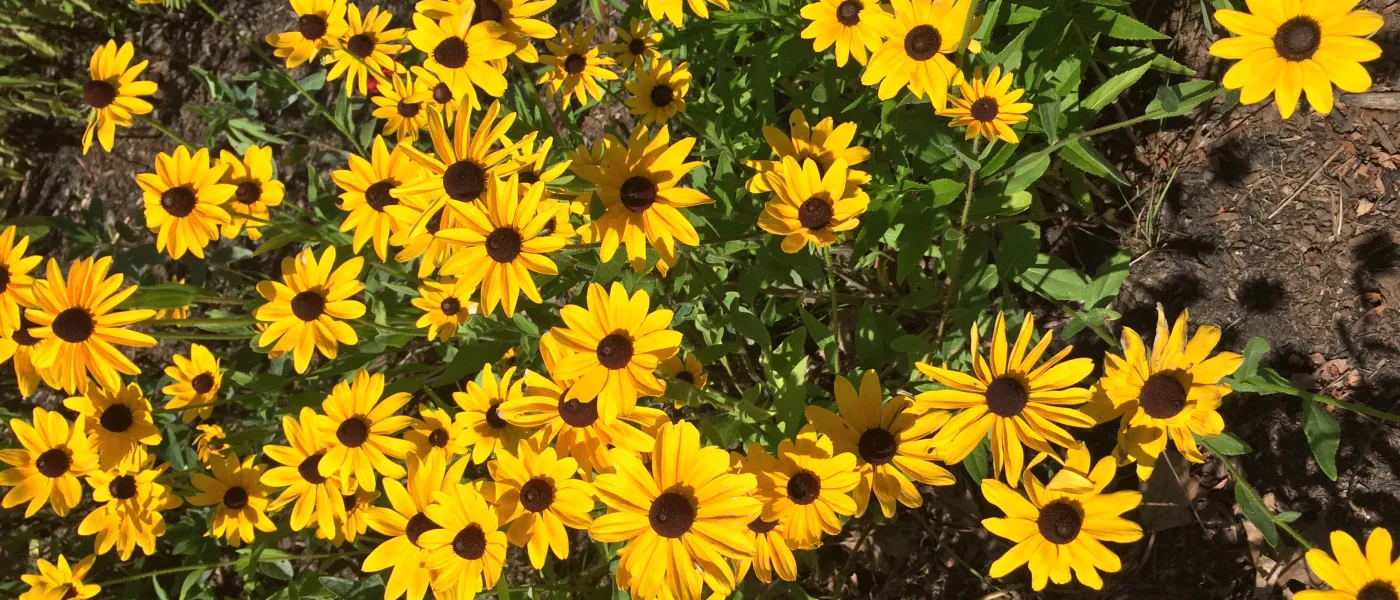
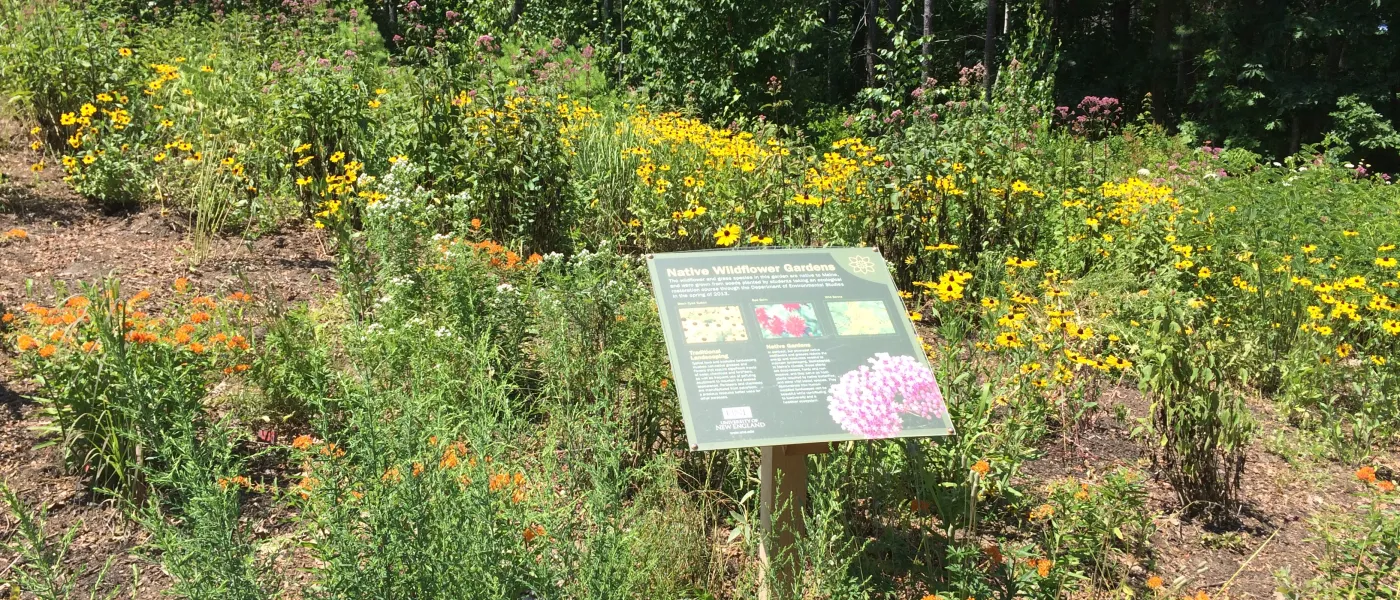
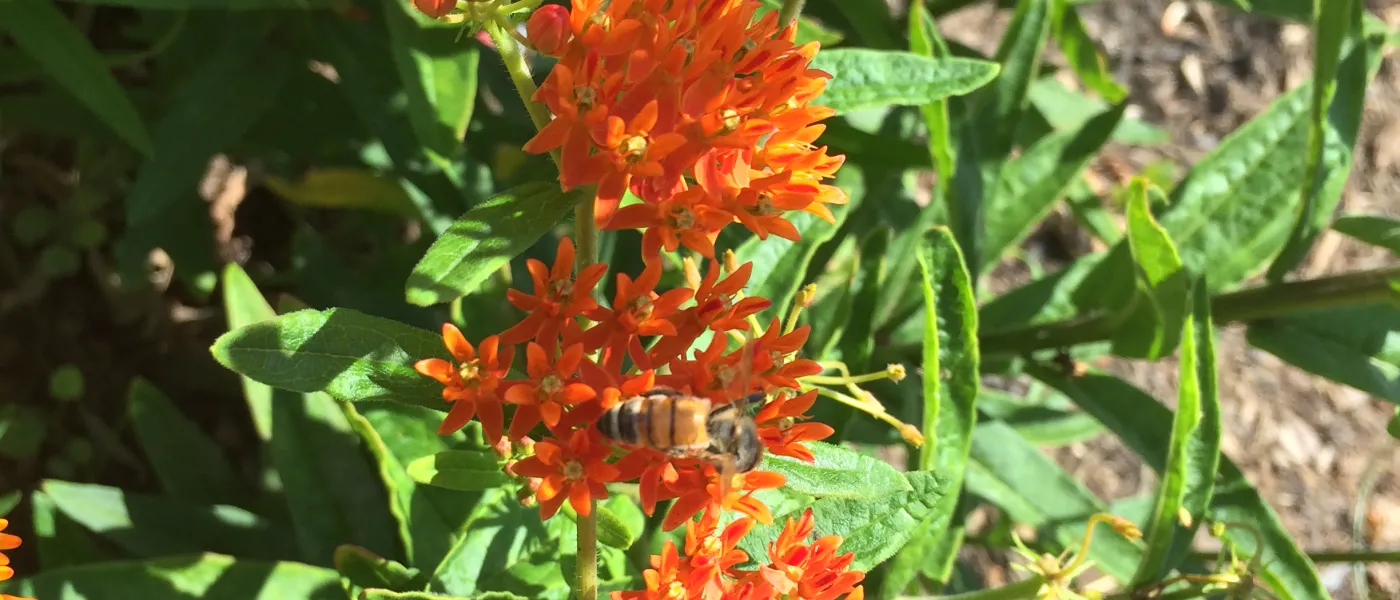
The wildflower and grass species in the garden in the parking area near the Student Academic Success Center are native to Maine and were grown from seeds planted by students taking an ecological restoration course through the Department of Environmental Studies in the spring of 2013.
Typical lawn and backyard landscaping involves non-native grasses and flowers that require significant inputs of water, chemicals and fertilizers, as well as frequent use of polluting equipment to maintain the desired appearance. Fertilizers and chemicals are manufactured from petroleum, a precious resource better used for other purposes.
In contrast, our perennial native wildflowers and grasses reduce the energy and resources needed to maintain landscaping. Well-adapted to Maine’s climate, these plants are deep-rooted, hardy and non-invasive, and they serve as host-plants required by native butterflies and other vital insect species. They demonstrate how human-modified landscapes can be beautiful while contributing to biodiversity and a healthier ecosystem.
